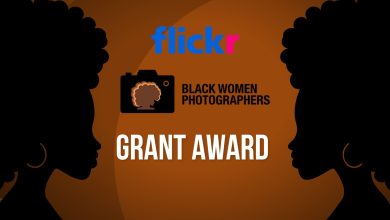TWiP 415 – Google Photos & the Paranoia of Free
This is TWiP episode 415 — Google Photos and the Paranoia of Free.
Photo management on the Google network has seen many incarnations and reincarnations. First there was Picasa, a strong tool that many still use today. Then there was Google+ Photos, where the company sought to tie your social photography into your social media footprint. And now there’s Google Photos no more plus. But did they get it right?
I don’t think there has ever been as many choices for where we store our precious photos as there are today. We’ve got Adobe with the Creative Cloud, Apple with iCloud Photo library, Flickr with their unlimited storage and community, 500px with their gorgeous UI, Smugmug, Zenfolio, Mylio and the list goes on.
But the basic issue that many of us are struggling to solve is this…
Where do I store and back up my professional work? And how should I maintain and share my personal stuff?
I’ve been personally struggling with this problem over the past year or so, and I had high hopes that with the release of Apple Photos and the iCloud Photo Library that my problems would be solved. But upon deeper inspection, the way Apple Photos deals with folders… that is — by ignoring them — didn’t exactly work for me.
Also, Apple currently has a paid one terabyte limit. And since I’ve got decades of photos, and my data footprint exceeds 1TB, that’s also a huge limiter for me.
Now enter Google Photos and the promise of unlimited storage, cloud-based photo editing, auto sorting and more. Again, I got excited and have tried out the service a bit. But as you’ll hear in this weeks roundtable discussion, there are still some gotchas. And the same old questions about privacy, terms of service, and the fear of Google misusing our data has come up yet again.
To discuss Google Photos and other topics this week, I’m joined by the host of The Candid Frame, Ibarionex Perello. And the host of The Digital Story, Derrick Story.
Links Mentioned in This Episode
- Google announces Google Photos
- iCloud Photo Library vs. Google Photos
- Google Jump 360 Virtual Reality rig contains 16 GoPro cameras
- Example Jump 360 video
- Richard Prince selling other people's Instagram photos without permission
- Missy Suicide offers up the same Instagram images for $90
- Patent and copyright attorney John Arsenault chimes in on the Richard Prince situation
Picks of the Week
- Ibarionex: Domke Next Generation Chronicle bag
- Ibarionex's Review of the Domke Chronicle.
- Derrick: Canon 50mm f/1.8 STM
- Frederick: Amazon Echo
TWiP 415 is brought to you by:
Panasonic Lumix Cameras
This episode of TWiP is brought to you by Panasonic Lumix Cameras. Visit the Panasonic Lumix Lounge to learn more about these fantastic cameras and see what the Lumix Luminary team is creating!
Lynda.com
This episode is also brought to you by lynda.com. Learn what you want, when you want, with access to thousands of high quality and easy-to-follow video tutorials, including many about photography. Do something good for yourself in 2015 and sign up for a FREE 10-day trial by visiting lynda.com/twip.
Animoto.com
Head over to Animoto.com/TWiP and use promo code “TWIP” to get 15% off of an Animoto Pro account.
Freshbooks.com
Freshbooks is the simple cloud accounting solution that’s helping thousands of new entrepreneurs and small business owners save time billing, and get paid faster. Sign up for free today at FreshBooks.com and join over 5 million users running their business with ease.
Connect with Our Hosts & Guests
- Ibarionex Perello: Website, Twitter, Google+
- Derrick Story: Website, Twitter, Google+
- Frederick Van Johnson: Website, Twitter, Google+, Instagram
Credits
- Pre-production by: Bruce Clarke
- Post production by: Suzanne Llewellyn & Vince Bauer
- Bandwidth provided by: Cachefly
- Intro Music by: Scott Cannizzaro







lol @ Frederick adding “this is cool” to another artist’s music. I almost feel like that’s exactly what this guy did. But as long as there’s people willing to pay for stuff like that, people like him will be around.
Exactly Ariel, as long as there are “enablers”, there will be a market for this brand of stupidity. I’m thinking of adding my own commentary to episodes of Game of Thrones and re-releasing them under the TWiP brand. Think that would fly?
Frederick – I just listened to your discussion on the Prince theft/Instagram story and as a patent attorney who deals with IP rights in software every day, I want to add my two cents. The story emphasizes that ALL copyright ownership of any work is limited by the possible fair use of the work. Fair use is defined in the copyright act as being a balancing of multiple factors related to the nature of the use of the copyrighted work (commercial or educational), the amount of the work used (a small portion as compared to the entire work), the nature of the copyrighted work, and the effect of the use upon the potential market for or value of the copyrighted work. Every case is different and based upon its particular facts.
When I heard the story before it was on the podcast, I was shocked and went to look at the prior Prince case where he took photos of photos from a book on Rastafarians and used them in his own work. In that case, Richard Prince was found to have used the underlying photos under the definition of fair use. The decision based its decision on the “transformative” nature of the use of the underlying work. If you look at the actual two sets of images at issue here, the Prince versions of the photos were significantly different than the underlying images – they were not the entire image, and they were altered in a few ways. Based upon this distinction, the Second Circuit decided that fair use was appropriate. I would note that the keys for me are the use of less than all of the images, the different nature of the two sets of images, the different markets for the two sets of images that did not significantly overlap, and the significant amount of transformation which could be identified in the later work.
The Instagram image case, I believe, may come out differently. Here Prince used the entire image of the earlier work. This factor seems significant to me. Just as any author may use a quote or line from a song in his or her later work, using the entire song – lyric – recording – etc would not likely be fair use. Here the entire earlier image is used in an unaltered state with the addition of a small comment. While one might find so social commentary in the comments – especially if considering all of the images/comments in the show are taken in its entirety; I question whether he stayed on the permissible side of the fair use line. It was clearly commercial use of these other images. He made a huge amount on money (which I believe is the cause of most people’s objections) and none of it was shared with the original photographers.
The best part of this case is that it is likely some attorney will take the case on a contingent basis and drag Mr. Prince into court. As I said, I think he will be likely paying something in this case. He seems to welcome it as he probably loves the publicity. Copyright is there to reward photographers and thus encourage the creation of more work. It would seem more appropriate for him to share some of his profits for the use of others images. The equities all go against him. If a case is brought, I would guess that law students will forever ready and compare these two cases involving Richard Prince to explore the contours of fair use. For all of us photographers, we merely need to remember that we only own the exclusive right to our images for a limited time that will always be subjected to a possible fair use.
I don’t know if this commentary from one atty and TWIP listener helps. It is being offered for free so please take it for whatever it’s worth.
Ted Forbes had an excellent episode of his Art of Photography addressing the Prince issue from the art world point of view. Basically, Prince is a hack: https://theartofphotography.tv/episodes/richard-prince-smells-bad/